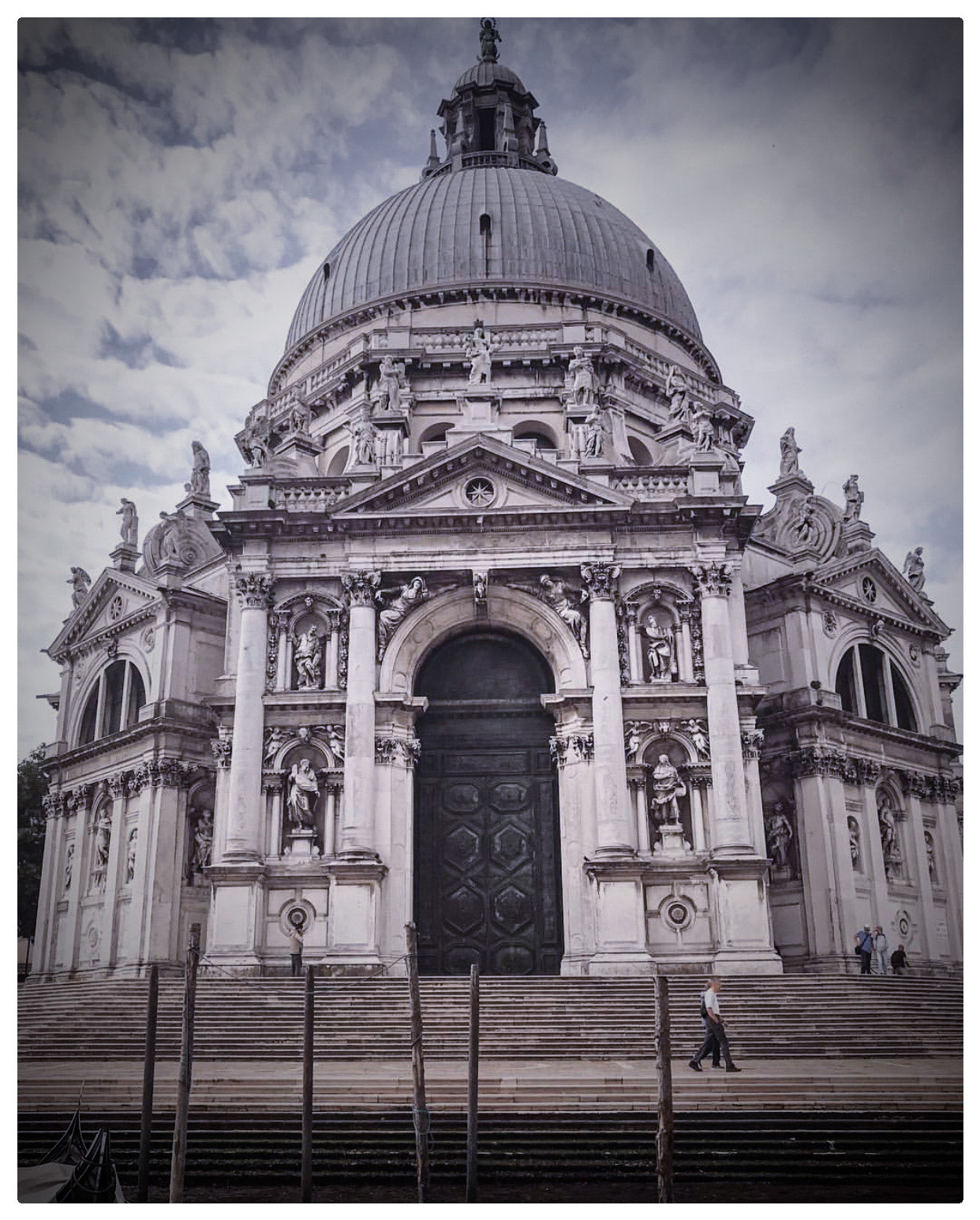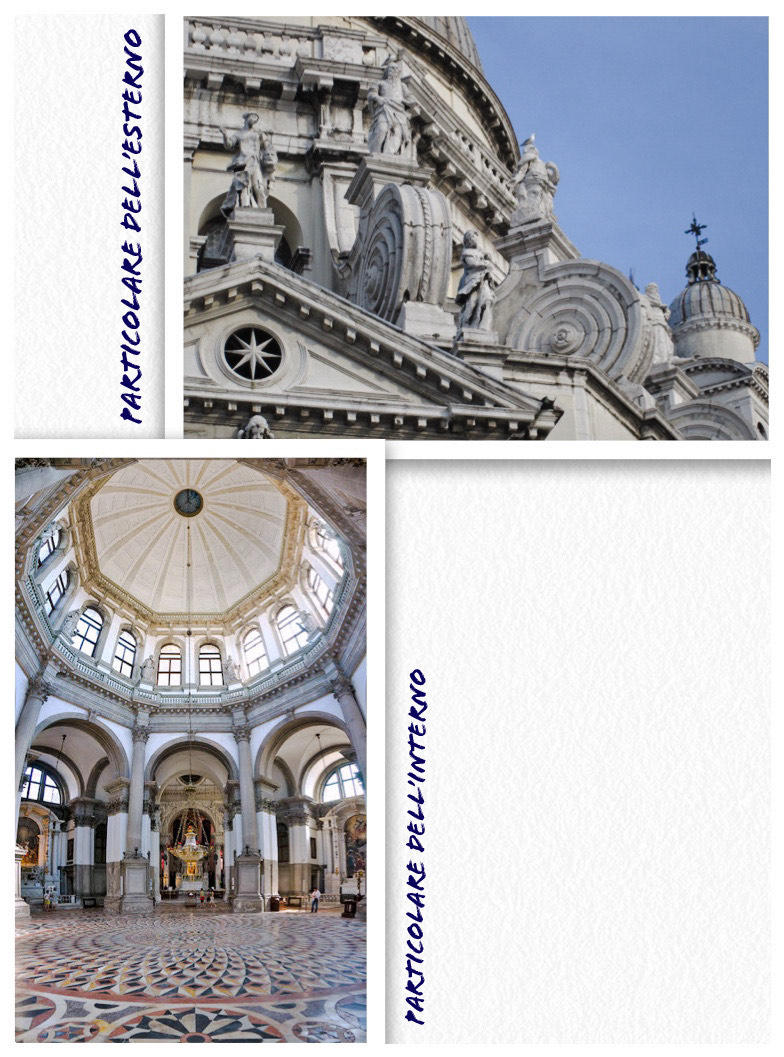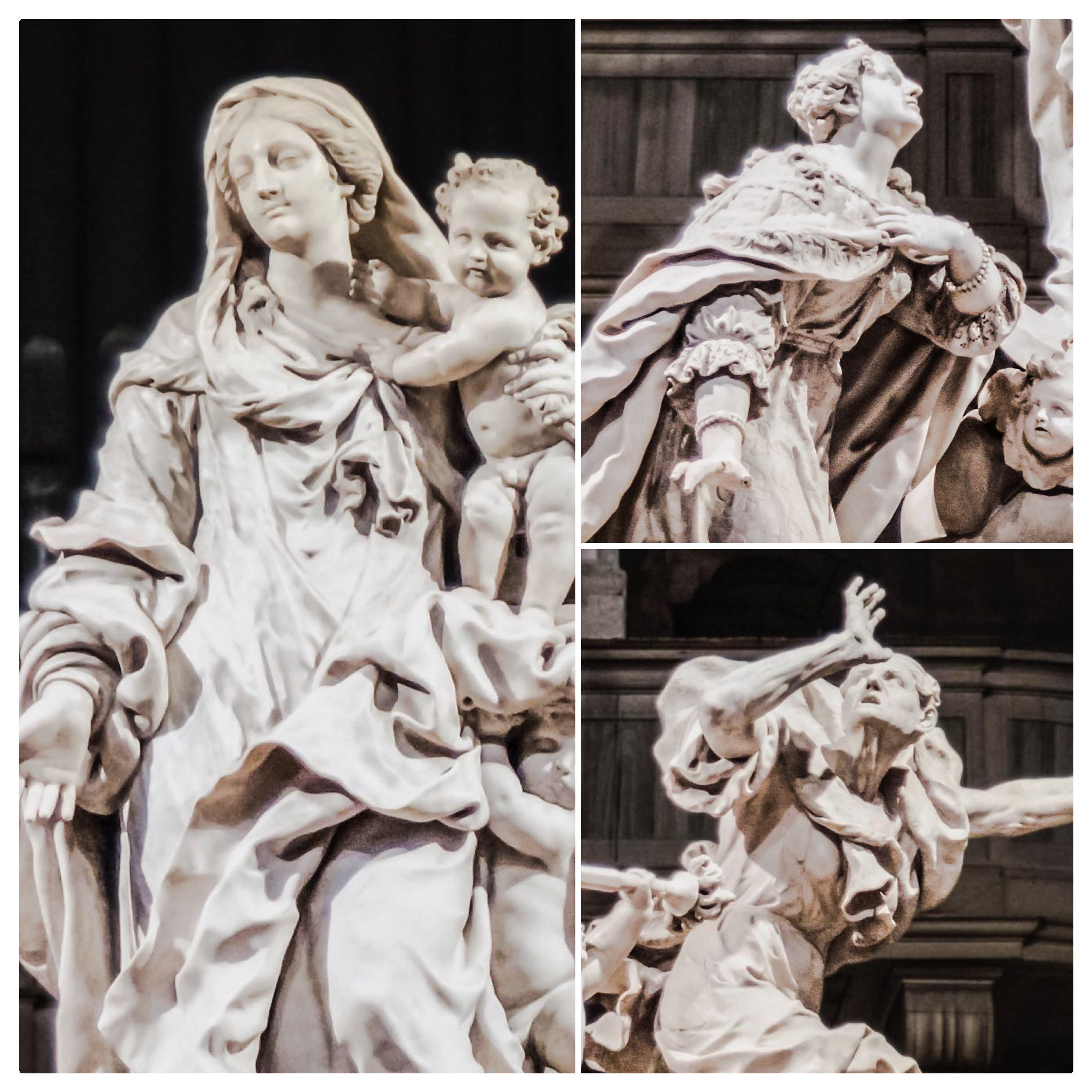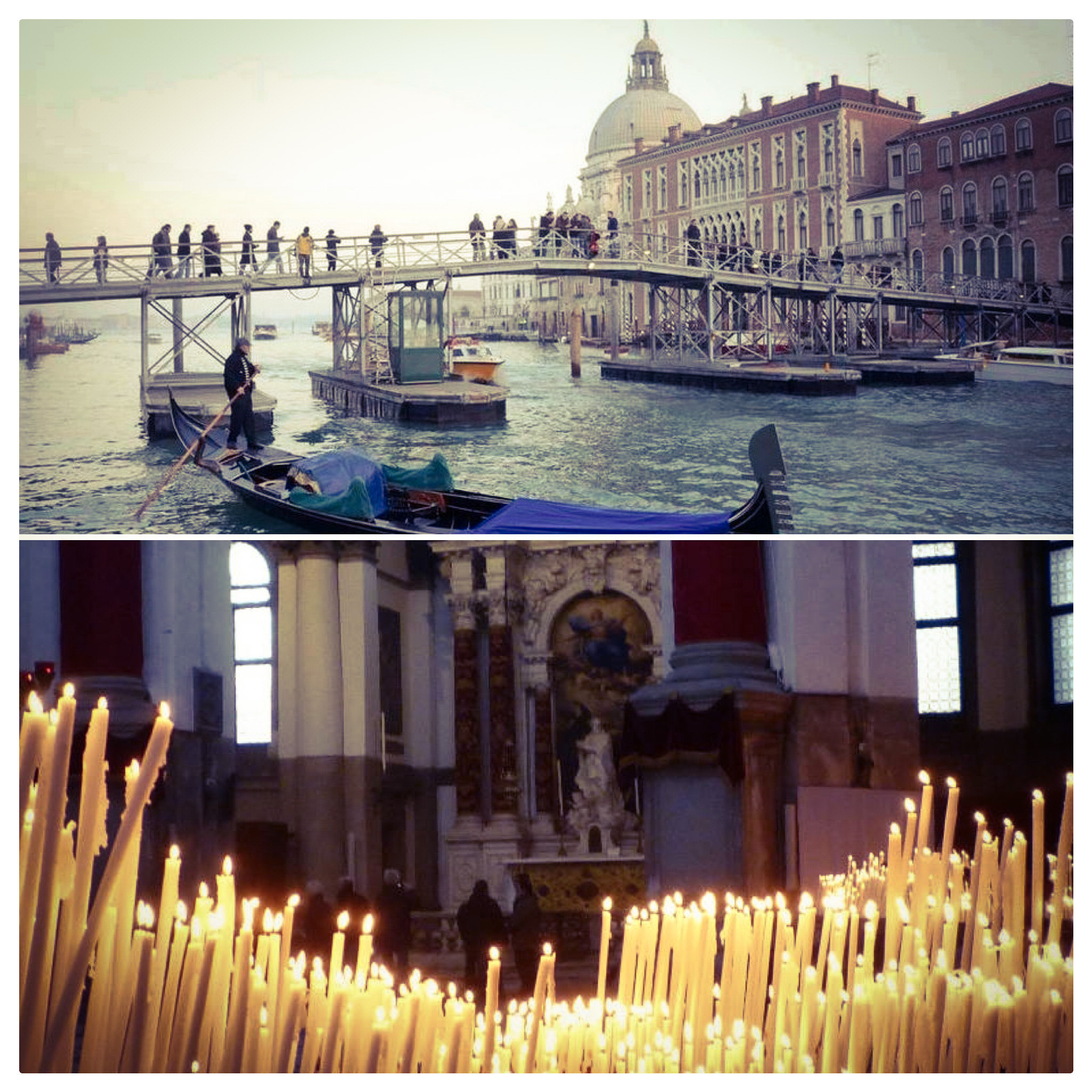On November 21st 2019 the Madonna della Salute is celebrated, as every year. And in Venice, traditional festivals are a very serious thing. On that day the city stops, and in a joyful climate mixed with a strong religious sentiment, it pays tribute to Santa Maria della Salute. A tribute that has its roots in the Thirties of the seventeenth century, when Venice was a dramatic hostage to the pest that reaped numerous victims, coming to kill more than 80 thousand citizens. The members of the Senate, then, made a vow to the Virgin, promising to build a colossal place of worship for her if she freed the city from the terrible epidemic. No sooner said than done. Only a year passed and the plague left Venice. The liberated city immediately provided for the maintenance of that promise and the construction of the religious building. A competition was announced that won the archistar Baldassarre Longhena with his Baroque-style project: the Church was consecrated by Patriarch Alvise Sagredo on November 9th 1687 and given the appellative "of health", that is of salvation.
The Basilica of Santa Maria della Salute, the baroque jewel of Venice

To make the new church, the place of Punta della Dogana was chosen as the site, where in ancient times there was a church and its monastery dedicated to the Holy Trinity.
Not bad as a location, at the point where the Grand Canal joins the waters of the San Marco Basin and meet those of the Giudecca Canal: a strip of land that is already naturalistically full of charm that the art of Baldassarre Longhena managed to enrich further making it one of the most evocative places, emblem of the panorama of the city. The Basilica has the particularity of showing itself in all its entirety, being able to turn around it offers us different points of view, what a rare axes for the other buildings of the Grand Canal that usually reveal only their façade on the water.
The Longhena creates a completely different system from the traditional churches in Venice: it chooses a central octagonal plan, as a sign of the independence of the Serenissima from the Roman curia, and joins a transversal element on the bottom that houses the presbytery with the idea of strengthening with the longitudinal trend.
Everything is closed by two large domes located about 60 meters above the floor, similar but different, imposing and perfectly recognizable from the outside. Over the centuries there has been much debate about which existing works had inspired the Longhena: it ranged from the Pantheon to the Rotunda of Palladio, up to San Vitale di Ravenna. The fact is that the artist for Venice realizes a building with great scenic and scenographic impact, made visible from various points of the city and the Lagoon proving to have thought also urbanistically and not only architecturally.
Bravo Longhena!
The structure of the Basilica: between inside and outside all the wealth of the Baroque

A large five-sided staircase elevates the structure on a higher level, as if to grant it greater grandeur and leads from the churchyard to the entrance, marked by a wooden door lined with bronzed copper plates. Once inside the plant is octagonal and immediately the attention falls on the eight huge pillars with the double function of supporting the dome and defining the deambulatory (a sort of corridor) that turns around the main body and that comes out from it exterior: here there are 6 rectangular chapels, 3 per side, symmetrical with respect to the central entrance, which protrude beyond the perimeter wall and are thus visible from the outside. Continuing, we reach the second body, where the altar is placed closed on the sides by two semicircular apses.
But the gaze then moves upwards, towards the arches and capitals, towards the balustrades and the vaults and the dome from which the light that gives variations and plays penetrates, changing its intensity and its quality according to the time of day.
The whole is singular, combining at the same time the multiplicity of the various elements and the uniqueness of a fascinating envelope all in one.
The exterior is baroque, it is rich but at the same time very modern in its forms and peculiar features: it fits perfectly and consistently into the environment, it is immersed in the Venetian reality, it is on the water whose reflections create a dialogue of the whole unique between building and city. Difficult not to be impressed, even at night when the waters of the Grand Canal become dark, and the whole loses the color scheme of the day, leaving us a wonderful and fascinating black and white painting.
The entrance is triumphal with very tall columns and the triangular tympanum is rich in sculptural elements, on top of which is the Madonna and Child for the glorification of Mary. The six protruding, radiant, tall and imposing chapels seem to cancel the mass of the central body. But the wonder lies precisely in the central body, which continues upwards with its octagonal shape, well identified by the internal pillars that come out and split into a V: here they wrap themselves in spirals, in snails that look like ribbons ready to unveil towards the Grand Canal, and that form the base for the statues of Saints and Angels, and support the majestic slightly sharp dome, surmounted by a second smaller one that throws everything upwards, giving an important verticality that balances the whole 'building. These volutes are undoubtedly the most recognizable sign of the Church of the Madonna della Salute and perhaps of the whole Venetian skyline. On the top of the dome there is a statue of the Virgin which extends her arms to bless and protect the city lying on its feet, carrying the "Capitana da mar" stick, the exclusive peculiarity of Venice alone.
In the rear part the dome of the presbytery rises, also with a second small dome, of smaller height and perfectly circular, flanked by the two soaring bell towers with their quadrangular shape.
The whole exterior is completed by the numerous presence of statues depicting angels, saints and figures of the Old Testament, which are thrown towards the sky.
The altar and the pavement: their hidden meanings

The Church of the Madonna della Salute is not only a jewel of Baroque architecture, but its interior is enriched by the presence of great works of art. Particularly interesting is undoubtedly the altar dominated by a sculptural composition that sees in the center the imposing statue of the Madonna della Salute which bears the Child in her arms and listens to the entreaties of the Venetian people, to the left a young girl who impersonates Venice and he asks the Virgin to save her from the plague, and on the right a third old and ugly figure representing the plague in the act of fleeing terrorized by the sacred presence. Below is a Byzantine painting of the Madonna, brought from Candia to Venice by the Doge Francesco Morosini.
The area of the presbytery is enriched by the works of Titian, Luca Giordano and Pietro Liberi; in the side chapels there are "Le nozze di Cana" by Tintoretto and "The descent of the Holy Spirit" by Tiziano Vecellio; the dome of the central body is enriched by wooden statues depicting the prophets of the sculptor Tommaso Rues, while the Sacristy contains important works by Titian.
But when one enters the Basilica, one's gaze is also attracted by the marvelous polychrome marble mosaic floor with circular geometric motifs. It was designed taking into account the paths that the Doge and the population had to follow on the day of veneration. Only the Doge and the Patriarch were allowed direct access from the entrance to the altar. The rest of the Venetians had to follow a circular path inside the ambulatory: two decorations of the pavement placed at the entrance just mark a sort of prohibition to go straight on and invite to the secondary route. This set of geometric elements closes in the central part with a circular crown of roses and ends perfectly in the center under the large dome with a metal rose and the words "unde origo inde salus" (salvation comes only from the origin) which is the key to understanding the origin of the Basilica, built by the Venetians as thanks to the Virgin for having granted them safety from the plague.
Today, like then, staying a few minutes on the rose is considered a good omen.
Seeing is believing.
Between kabbalah and numbers: the esoteric secrets hidden behind the design of Longhena
An artist, you know, always has secrets that he doesn't reveal, and it seems that even Longhena had them, at least it seems that something strange is hidden behind the design of his Basilica della Salute. Experts agree that he was inspired by the temple of Venus Physizoa described by the most famous esoteric novel of the Renaissance, the Hypnerotomachia Poliphili by friar Francesco Colonna.
However, a German professor, Gethard Goebel-Shilling, took the trouble to compare the measurements of the structure with those of the artist's original drawings, considering the size of the Venetian foot (35.09 cm). It turns out that two numbers and their multiples, like a constant, are chasing the bottom of the design: the 8th and the 11th. Oh well, 8 is easy, being a Christian symbol of the infinite with references to resurrection and eternal life: the plan is octagonal, 8 are the pillars, 16 are the steps of the external staircase, 16 are the outer snails. But 11 is a negative number for Christianity, representing the transgression of the ten commandments and capital sin. While for the Jewish kabbalah it represents instead the origin of the ten commandments, or God surrounded by his ten sefirot (10 + 1 = 11). If you add up the 8 and the 11, you get the 19, which according to the kabbalah is the number of the Sun, for the Christians represented precisely by the Virgin Mary.
But every measure of the whole structure is the result of simple calculations between these two numbers.
But because Longhena had used this system, uniting Christianity with a guide, his work is completely uncertain. Not even the knowledge of his person can help us because the fact is that his own origins are unknown, knowing very little about the artist in his private, so we are not able to tell which religion or belief he belonged to. The only thing known is that his father, a stonemason from Brescia, was called Melchisedec, a purely Jewish name that would suggest that the artist's family belonged to this creed.
There is not much importance in which God believed Longhena, but it counts that giving the Basilica this secret kabbalistic harmony had wanted to give a very precise message: the church stood as a thank you for the end of the terrible plague epidemic and had to be erected on ecumenical foundations: such was the condition of man before such catastrophes. And so it was done!
This would be enough today as then ...
The Festa della Salute: a centuries-old Venetian tradition, between the sacred and the profane

Every year the thanks of the Venetians to the Madonna della Salute for having freed the city from the grip of the plague in that distant 1963 are renewed: in reality it is a very personal occasion to thank the Virgin and manifest her faith. The solemnity is held every November 21st: singular is the atmosphere that reigns on this day, characterized by a sincere and heartfelt religious participation that also shows a strong bond with those that are the roots of the Venetian people and the oldest traditions of the city.
On this occasion a floating bridge is built on the Grand Canal, once made up of boats, which from Santa Maria del Giglio goes directly to the church square, and which facilitates the flow of pilgrims on their way to the altar. Here it is a ritual to light a candle to the Madonna and turn her personal prayers so that she may intercede for their good health, pending the religious celebration officiated by the Patriarch of Venice.
Like any self-respecting popular tradition, even that of the Madonna della Salute perfectly mixes the religious feeling with the more joyful and secular one: the churchyard is populated by stalls and gazebos full of typical sweets, typical handicraft products, balloons and toys for the little ones. But the festival also brings with it an ancient culinary tradition: on that day in the city castradina is consumed, called "dish of health". It is a dish based on smoked and seasoned mutton, boiled together with a cabbage soup. Really very tasty.
If you are in Venice at this time, between a candle and a plate of castradina, enjoy the party as true Venetians!










Lascia un commento